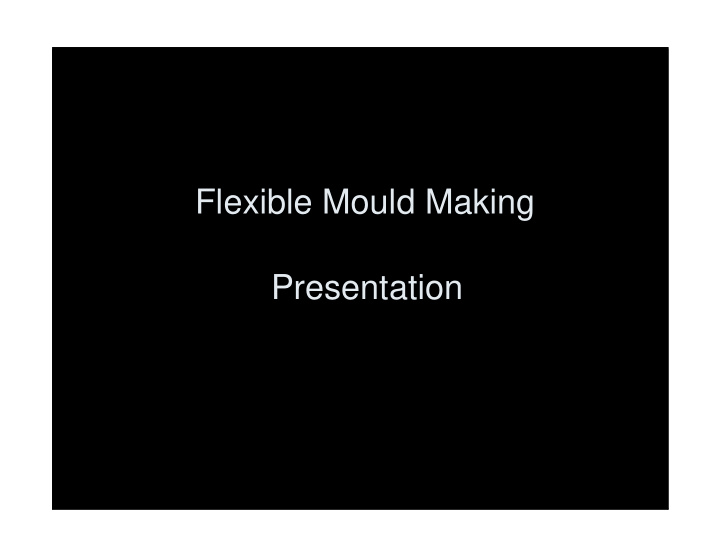



Flexible Mould Making Presentation
Start with a master pattern
This is a replica of the item to be produced
Ensure the pattern is free from defects Fill and sand where required
Fix the pattern to a baseboard ensuring there are no gaps
Fix sides to the baseboard. Again there must be no gaps.
Ensure the mould is level
Apply a wax based release agent and allow to dry
Calculate the amount of rubber required • Calculate the volume of the mould L x W x H 1.2 x 0.7 x 0.05 = 42 litres
Subtract the volume of the master mould (assuming it contains 50% voids) 1.1 x 0.65 x 0.04 x 0.5 = 14.30 litres
• The volume of the Duramould is therefore 42 – 14 = 28 litres This equates to 28 kgs
The specific gravity of Duramould is 1 With some rubbers the SG can be as high as 1.4. Using these, you would need 39 kgs An additional 11 kgs Remember this when comparing prices!
Duramould A & B are supplied in 25kg drums
Duramould has a simple mix ratio of 1:1 We require to mix 14 kgs of Duramould Part A 14 kgs of Duramould Part B Due to the high quantity, it will be mixed in Two batches 7 kgs Part A 7 kgs Part B
Mix parts A and B thoroughly
Transfer to another container and remix
Pour the mixed Duramould onto the centre of the pattern
Let it flow to the edges
Use a hot air blower to remove any remaining air bubbles
Leave overnight
De-moulding Firstly, remove the sides
Then peel the set Duramould from the pattern
Treat the mould with concrete release agent prior to use
When not in use, store the mould flat
Recommend
More recommend